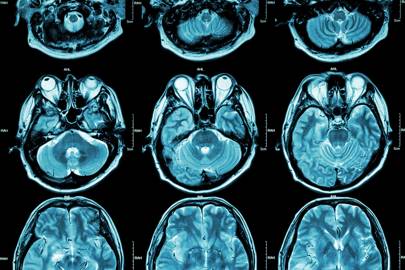The multi-dimensional universe hiding inside your head

A fabric of complex structures in our brain could be the key to understanding how the organ works, according to a new study. It could even provide an answer to mysteries like where our memories are stored.
The human brain is one of the most complex structures in nature, and we are still a long way from fully understanding how it works. Now, a group of researchers from the Blue Brain Project is bringing us closer to this goal using complex computer models.
Its latest model describes the brain as being made up of ‘multi-dimensional’ geometrical structures and spaces.
“We found a world that we had never imagined,” said neuroscientist Henry Markram, director of Blue Brain Project and professor at the EPFL in Lausanne, Switzerland.
“There are tens of millions of these objects even in a small speck of the brain, up through seven dimensions. In some networks, we even found structures with up to eleven dimensions.”
The structures form when a group of neurons – cells that transmit signals in the brain – forms something called a clique. Each neuron connects to every other neuron in the group in a specific way, to form a new object.
The more neurons there are in a clique, the higher the ‘dimension’ of the object.
It is important to understand these structures do not exist in more than three dimensions in space. Only the mathematics used to describe them uses more than three dimensions.
“Outside of physics, high-dimensional spaces are frequently used to describe complex data structures or conditions of systems, for instance, the state of a dynamical system in state space,” professor Cees van Leeuwen, from KU Leuven, Belgium and reviewer of the paper, told WIRED.
“The space is simply the union of all the degrees of freedom the system has, and its state describes the values these degrees of freedom are actually assuming.”
“When you take a complex network like the brain, you try to associate some familiar objects with it so that you can try to understand what it does,” Ran Levi from Aberdeen University, who worked on the paper, told WIRED. “Without it, all you see is a mess of ‘trees’ i.e. neurons firing at what appears to be random patterns.
“What we did is we took the complex structure of the brain network and mapped it to this universe. thus picking up very precisely defined high dimensional objects that give us a key to understanding structure and function.”
The team used a mathematical branch called algebraic topology to model these structures within a virtual brain, generated using a computer. Experiments were then carried out on real brain tissue, to test the results.
When the researchers added a stimulus into the virtual brain tissue, cliques of progressively higher dimensions assembled. In between these cliques were holes, or cavities.
“The appearance of high-dimensional cavities when the brain is processing information means that the neurons in the network react to stimuli in an extremely organised manner,” said Levi.
“It is as if the brain reacts to a stimulus by building then razing a tower of multi-dimensional blocks, starting with rods (1D), then planks (2D), then cubes (3D), and then more complex geometries with 4D, 5D, etc. The progression of activity through the brain resembles a multi-dimensional sandcastle that materialises out of the sand and then disintegrates.”
The next step will be to see what practical role these structures play in the brain. For example, neuroscience has also been struggling to find where the brain stores its memories, and the holes could be a solution.
“They may be ‘hiding’ in high-dimensional cavities,” Markram speculates.
The research is published in Frontiers in Computational Neuroscience.
from: https://www.wired.co.uk/article/neurons-multi-dimensional-network-brains
